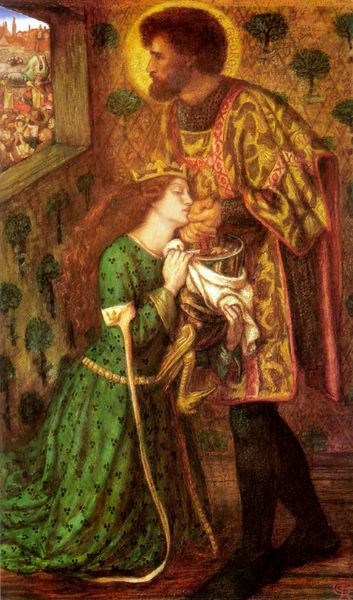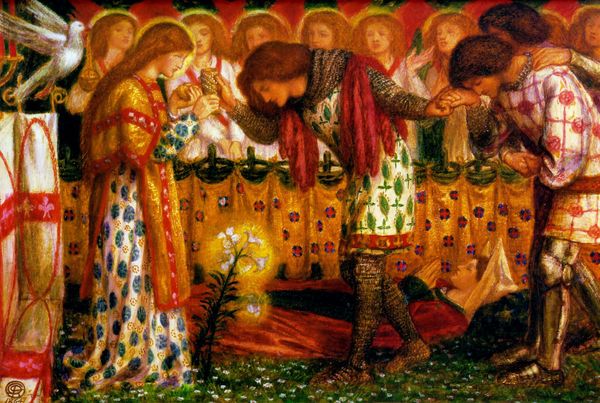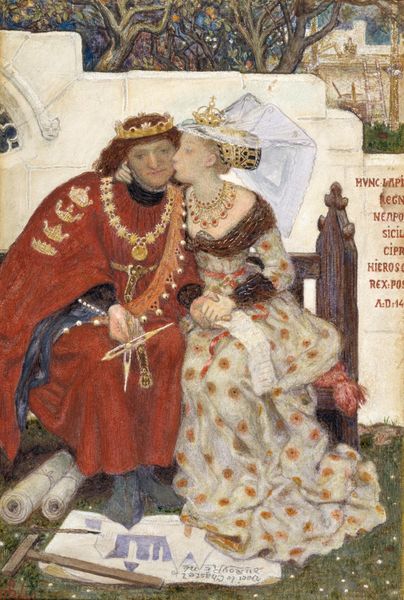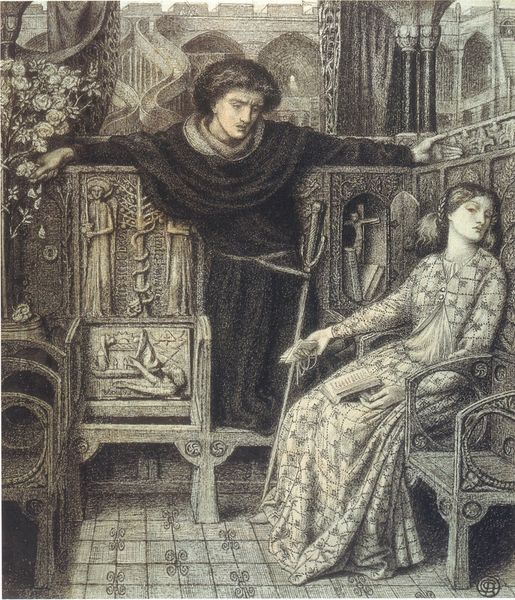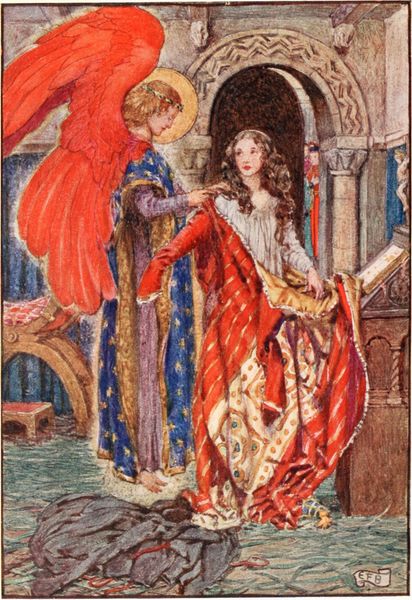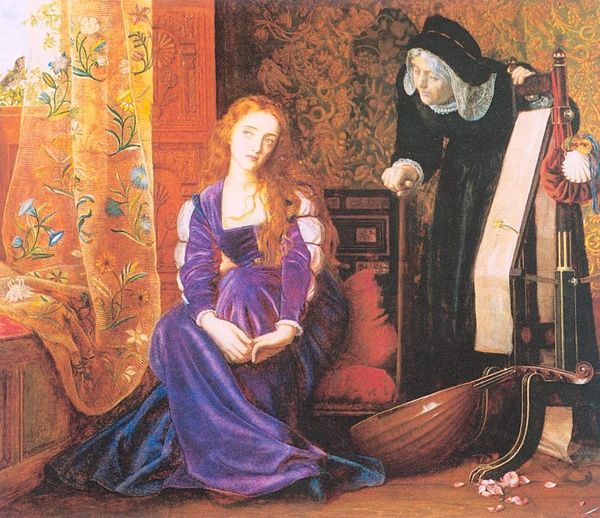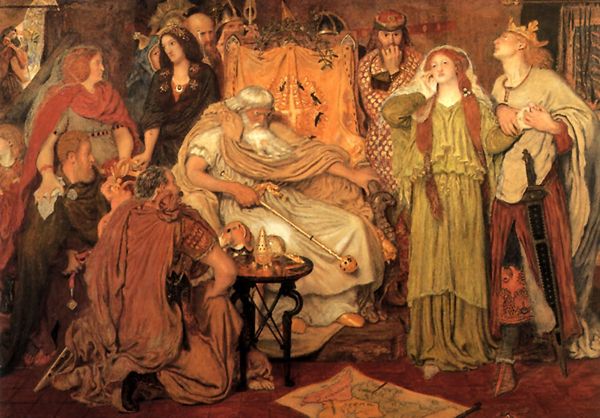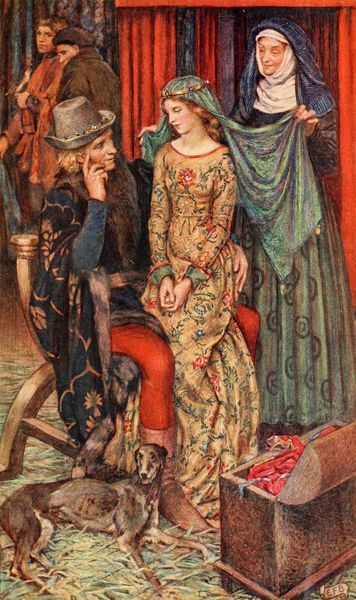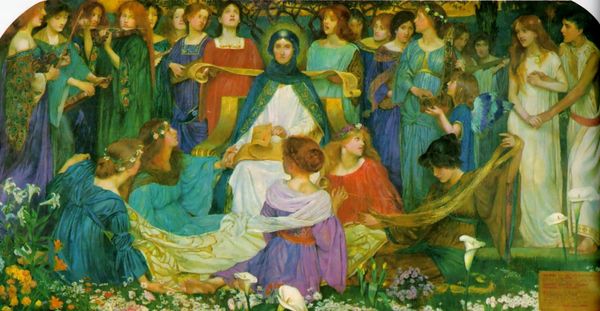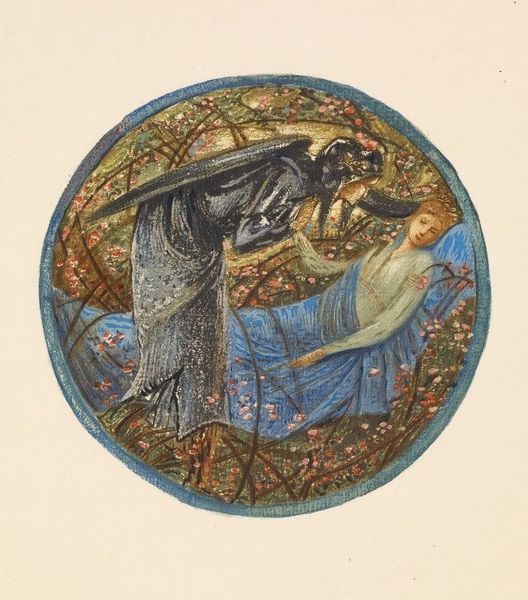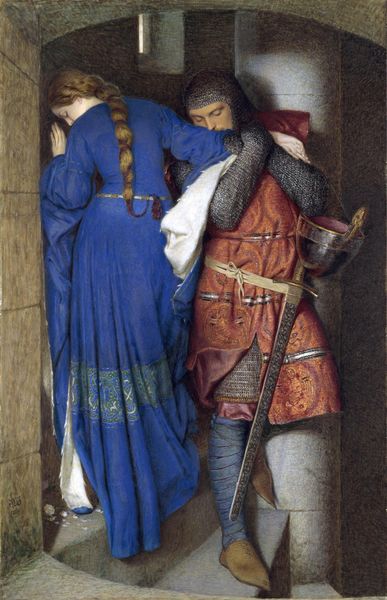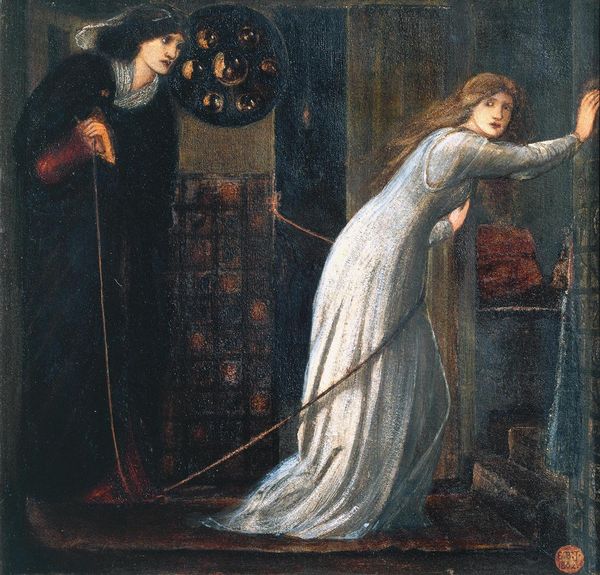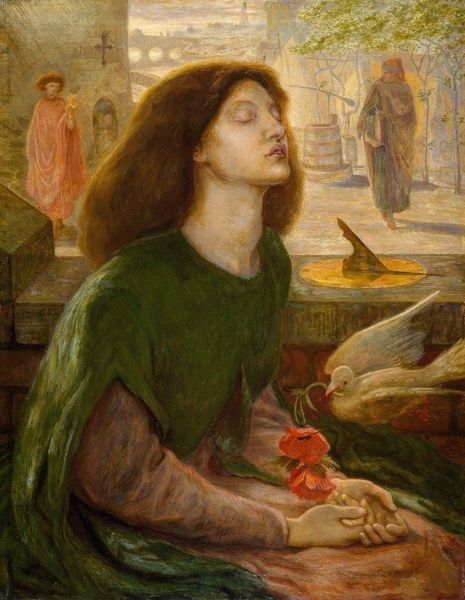
Copyright: Public domain
Curator: Immediately, I'm struck by the intimate, almost claustrophobic feel. There’s an intensity conveyed by the figures and the richness of detail packed into this small space. Editor: You’re reacting to Dante Gabriel Rossetti’s “Roman de la Rose,” painted in 1864. Currently residing at Tate Britain, it's a vivid example of the Pre-Raphaelite movement’s style and aesthetic. Curator: Ah, yes, I see the Pre-Raphaelite obsession with symbolism and idealized beauty. This reminds me of the discourse around gender and power within such depictions, right? The woman is positioned...well, quite literally above the kneeling man. How much does that play into broader Victorian anxieties? Editor: Absolutely. Consider Rossetti's relationship with medieval literature, especially texts like "Roman de la Rose," from which the piece draws inspiration. But beyond simple illustration, Rossetti, like other Pre-Raphaelites, often used historical themes to comment on contemporary social roles. Here, we see the trope of courtly love challenged through power dynamics visibly visualized. Also it can be observed in other allegorical meanings like the divine beauty of the virgin Mary kissing and forgiving the mere man. Curator: The colour palette also tells us something. The restricted palette of dark green and crimson contrasted with bright blue creates almost a stage upon which those gender roles are being acted out, emphasizing, too, perhaps a sense of romantic destiny and historical role-play. Editor: It also raises a question on who is in charge, both of a kiss and life destiny. What's fascinating to me is how Rossetti positions this intimate scene within a broader visual language accessible to the public – and the politics it inherently possesses. Rossetti challenges the contemporary norms in his time and asks us to be curious on who the piece truly represents in today's era. Curator: Exactly! The Pre-Raphaelites often created very personal visual lexicons through painting, thus allowing future generation to reimagine relationships around them with different intersectional perspectives in order to break norms and expectations. Editor: Examining this scene critically allows us to see it more clearly, for everything that has been changed, questioned and still remains. Curator: It allows us, regardless, a moment to examine and be still, for ourselves and how much we expect of the other person to begin with.
Comments
No comments
Be the first to comment and join the conversation on the ultimate creative platform.
